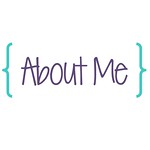While I have already posted a lesson on summarizing with my fifth graders, I wanted to show the beauty of working with a variety of grade levels. The following lesson was used with fourth graders. As an intervention teacher, I coordinate a great deal with the classroom teachers, but am also in the unique position to see the entire scope of the elementary curriculum.
Fourth graders require more scaffolding with summarizing, but we introduce the formula of main idea + important details to help prepare them for more complex summarizing in the fifth grade.
I began the lesson with the following anchor chart. (Students also glued a copy into their reader's notebooks.)
We discussed the key components of a summary: main idea + important details. I also tell students that it is important to incorporate the key words into our summaries. These key words help us figure out what is important in the text. We also discuss writing the summary in our own words and not simply copying from the book. Last, but certainly not least, we must remember not to tell too much! This is something my fourth graders struggle with. If you tell everything in the entire story, you can't forget anything important right?! (That is missing the point of a summary!)
For this lesson, I used a book about the Wright brothers. They are local legends around here. Also, students have a big biography assignment due in their classrooms this month, so this provided a nice connection. Students independently read the introduction of the book. Then we identified the main idea together, and students wrote this main idea on a post-it. (labeled main idea.)
I also added the main idea to our anchor chart.
The book was broken up nicely into sections with headings. Students independently read one section at a time and then we determined what the important detail(s) were. We then wrote these details on post-its and stuck them to our books.
Breaking the summary up into small sections helped introduce the concept and make it more manageable for students. We continued with this process throughout the entire book. Once finished, students used their post-it notes to compile a full summary of the text in their reader's notebooks. As students worked independently, I took a running record using a few pages of the text with each student.
Also, to continue reviewing nonfiction text features, we completed a text feature "scavenger hunt" with the text. Students had to find the correct page number for each text feature. The "scavenger hunt" form can be found at:
http://www.teacherspayteachers.com/Product/Non-Fiction-Feature-Scavenger-Hunt.






No comments:
Post a Comment
Thank you for the comment! I love hearing what you think!